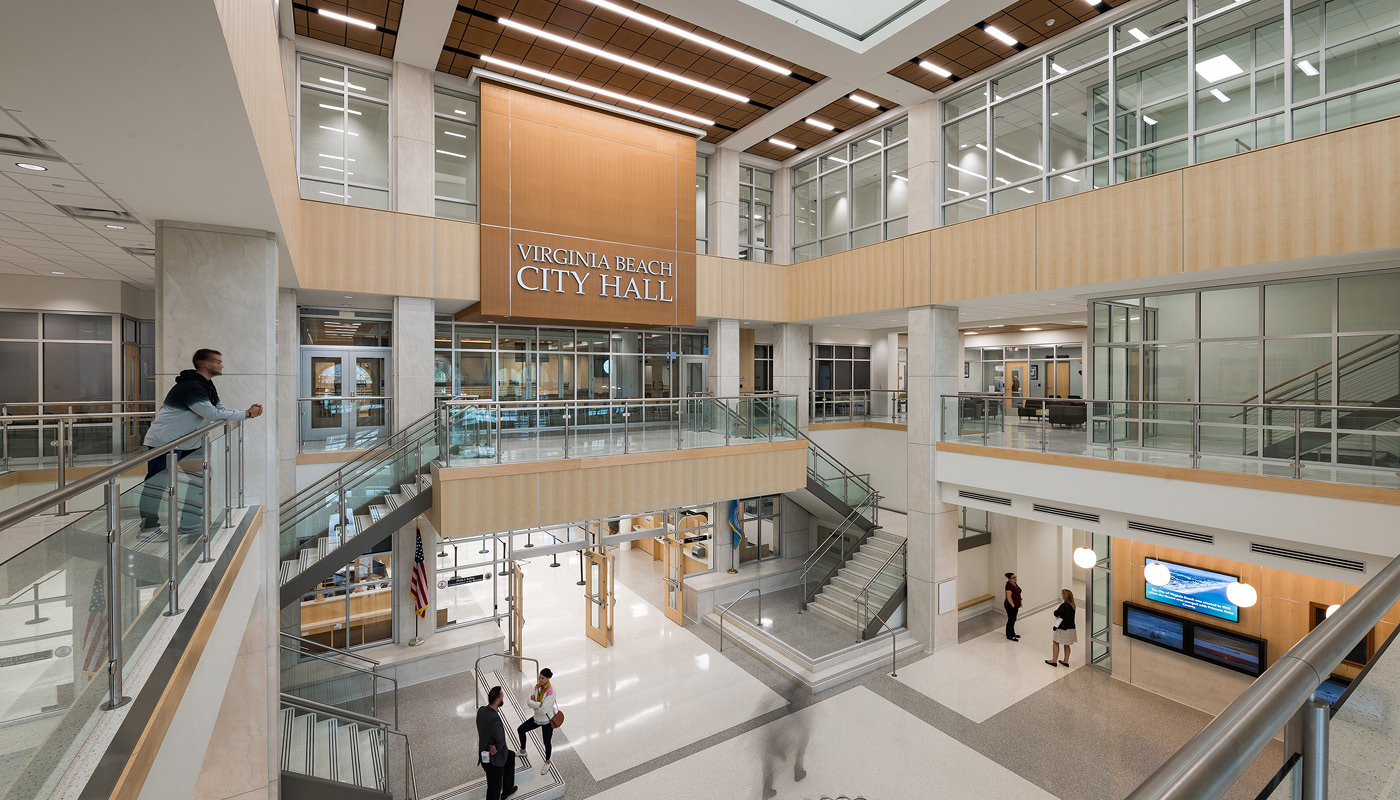Finally, a moment of joy arrives for employees of Virginia Beach

In 2016, the city of Virginia Beach turned a corner. As a series of renovations and new builds, officials joined forces with Moseley Architects to design a new city hall. With an existing structure dating back to 1969, the design outstayed its welcome through a layout that interfered with what city employees do best: interact safely and efficiently with the community.
The process didn’t begin over a drafting table. Instead, Moseley Architects engaged city hall staff, and the community, through public meetings and surveys, emerging with three primary design goals: security, flexibility, and functionality. The result included a 136,000-square-foot, $37 million facility, that’s “Spectacular,” says Thomas Nicholas, facilities engineer for the city’s Department of Public Works. But the groundbreaking ceremony that followed was an emotional juxtaposition. Weeks ahead of the event, an employee-turned-shooter made his way through Building Two of the Virginia Beach city complex, leaving 12 dead, four wounded and another 400 in shock and horror.
It’s been over three years since that grim day, and as employees heal, they’re also healing from the COVID-19 pandemic. But finally, a bright spot has come.
“The May 31, 2019, mass casualty was one of the most depressing events you could ever live through, followed by COVID-19, which was depressing for our entire nation,” Nicholas says. “The opening of the new City Hall is sort of the first piece of good news in a long time.”
The design is open and welcoming but equipped with the assurances of top-flight security and safety. Visitors are met with a three-story lobby and a 300-seat city council chamber, adjoining a 60-seat conference room.

Sustainable Design
When it comes to environmental impact, the building represents one of Virginia Beach’s crowning accomplishments, as Moseley Architects led the city to a Designed to Earn the Energy Star (DEES) recognition for its commitment to energy efficient design. A modern mechanical system with demand control ventilation and enthalpy wheels, efficient light fixtures, lighting and power adjusting sensors, a multi-system energy efficiency monitoring and management program, and an energy efficient building envelope all produce around 27% energy savings over a baseline building. The plan reduces use of potable water by 25%, also incorporating rainwater management to reduce impacts from runoff, and a retention basin that’s designed as an attractive pond surrounded by walking trails.
Health and Safety
Inside, a focus on health and safety transcends the building’s traditional colonial design, as interior glass and a large cupola allow light to filter deep into the building.
“There’s an open workplace concept, which law enforcement officials will tell you is better and safer for first responders coming into a building,” Nicholas says. “That’s going to have a real impact on how people feel.” As for move-in day, “It was an emotional uplift—not just for the folks who work in City Hall, but all 7,000 employees who work throughout city operations.”